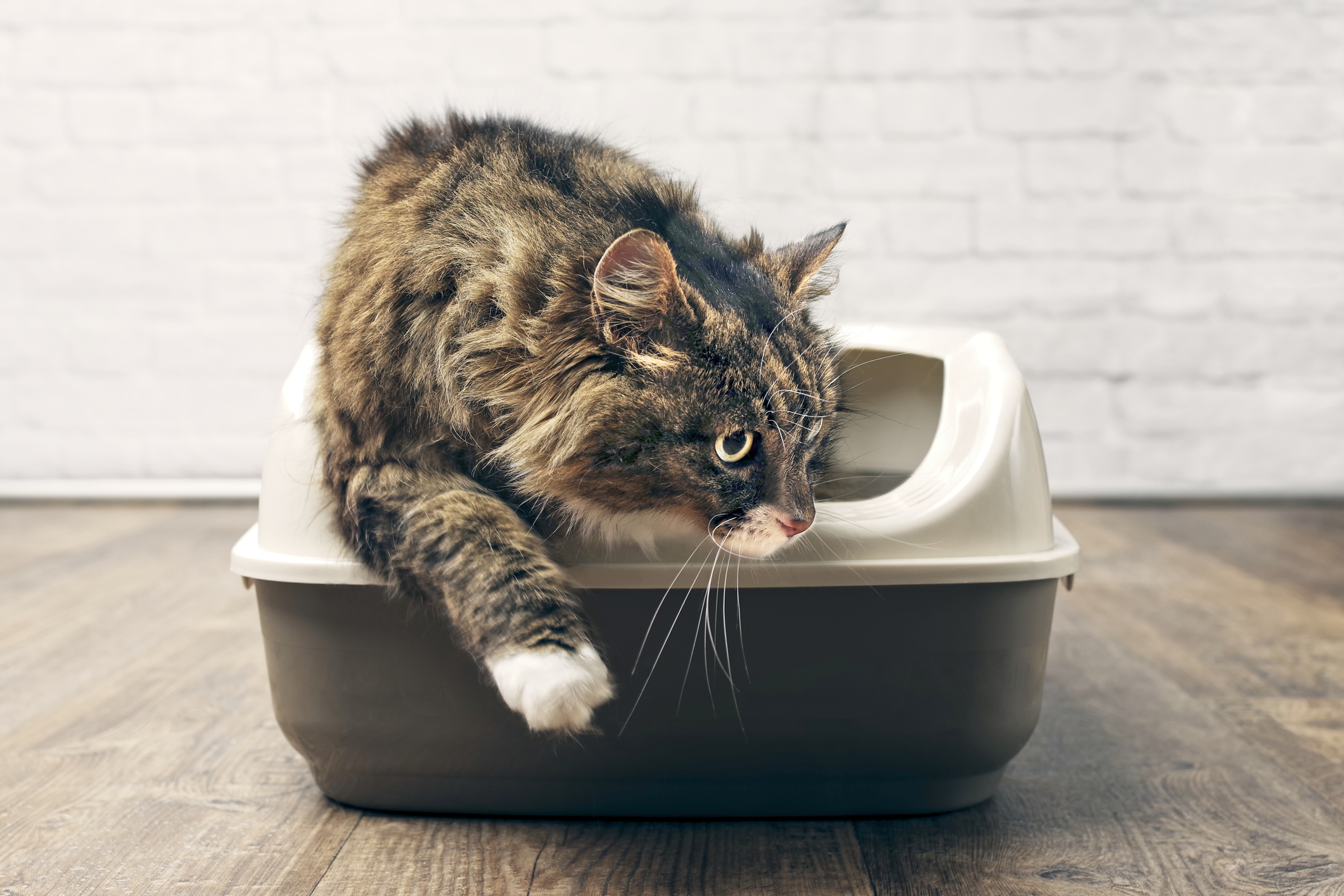
This Urinary Condition Can Be Deadly for Male Cats
Thanks to scooping and cleaning, cat owners are likely to be more familiar with their pet’s litter boxes than they’d like to be. But in some cases, this close attention to your kitty’s bathroom habits can be a good thing! Paying attention to your cat’s litter box can help you uncover problems with their health. One such problem might be a urinary blockage—a painful and potentially life-threatening condition common in male cats.
A urinary blockage, also known as a urinary obstruction, occurs when something blocks the urethra (the tube that carries urine out from the bladder) of a cat, leaving them unable to urinate normally. The blockage might be caused by crystals or stones formed from minerals in the kidneys or bladder or by “plugs” formed by cells and mucus. In some instances, the obstruction might be caused by an infection or a tumor. The blockage might be complete or partial, depending on its size and orientation.
Urinary blockages can happen in all cats, but they are of particular concern in neutered male cats. When a male cat is neutered, their urethra is narrowed. This increases the risk of urethral obstruction, since the space to block is much smaller.
Urinary obstructions are extremely serious and can be life threatening for cats. Because the urine cannot be expelled from the bladder, the bladder experiences significant pressure from fluid buildup and is at risk of rupturing. The excess urine in the body can also cause other medical problems due to electrolyte imbalances and toxins entering the bloodstream instead of being filtered out.
Identifying urinary blockages

Urinary obstructions are generally easy to identify in cats if you witness them attempting to use the litter box. The main giveaway will be their inability to pass urine, or only passing a little bit every time. Cats often return to the litter box frequently to try to urinate with no success.
Your cat may also howl or whine from pain when trying to urinate, due to the pressure on their bladder. They might show other symptoms of illness, as well, such as hiding, lethargy, disorientation and vomiting.
Sometimes, the symptoms of a urinary blockage can also mimic those of other lower urinary tract problems like urinary tract infections, but little to no urine will be present.
Unfortunately, you might not realize that your cat is unable to urinate until you actually witness them attempting to go. If you’re home, you may hear them howling. If you spend a lot of time out of the house, your biggest indicator might be the lack of urine in the litter box when you go to clean it.
If you notice your cat straining to urinate or showing other signs of a urinary obstruction, take them to the vet right away to be examined. Allowing your cat to be fully obstructed for even a few days could have deadly consequences.
If they do have a blockage, they will likely need to be hospitalized. To treat the problem, your cat might require surgery and a catheter to be placed, which will allow your feline friend to empty their bladder as they heal. They will need medication and lots of rest once they return home.
Helping your cat manage their urinary health
Sadly, cats who have suffered from a urinary blockage once have a higher chance of experiencing them again. Pet owners should be mindful of this and keep a close eye out for the signs.
To reduce your pet’s chances of experiencing another blockage, you may need to make some adjustments to your kitty’s diet and daily health. Cats who develop kidney or bladder stones may benefit from a low-magnesium and -phosphorus diet that promotes a healthier urinary pH. Some prescription formulas are designed for cats with frequent urinary troubles. Discuss this option with your vet to see if it’s right for your feline friend.

Here are a few other tips for promoting urinary health in cats:
- Keep them hydrated: Cats who drink more water urinate more frequently. This helps flush out waste products and prevent crystals or stones from forming. If your cat won’t drink from a bowl of water, consider investing in a water fountain or switch them to wet food for the added moisture.
- Make litter boxes available: Clean, conveniently placed litter boxes encourage your cat to go more frequently, flushing out toxins and waste products that could cause buildups.
- Reduce stress: Stress has been shown to negatively affect the urinary health of cats. Many owners notice this in other ways, such as their cat urinating around the house. To keep the urethra and overall urinary tract healthy, work to minimize your kitty’s stress levels and give them lots of TLC.
Because urinary obstructions can be so devastating to cats, it’s very important to watch out for the symptoms and seek emergency veterinary care right away. If anything seems abnormal about your cat’s litter box habits, it’s best not to wait. Get them help so they can go back to their usual habits without pain or discomfort.


